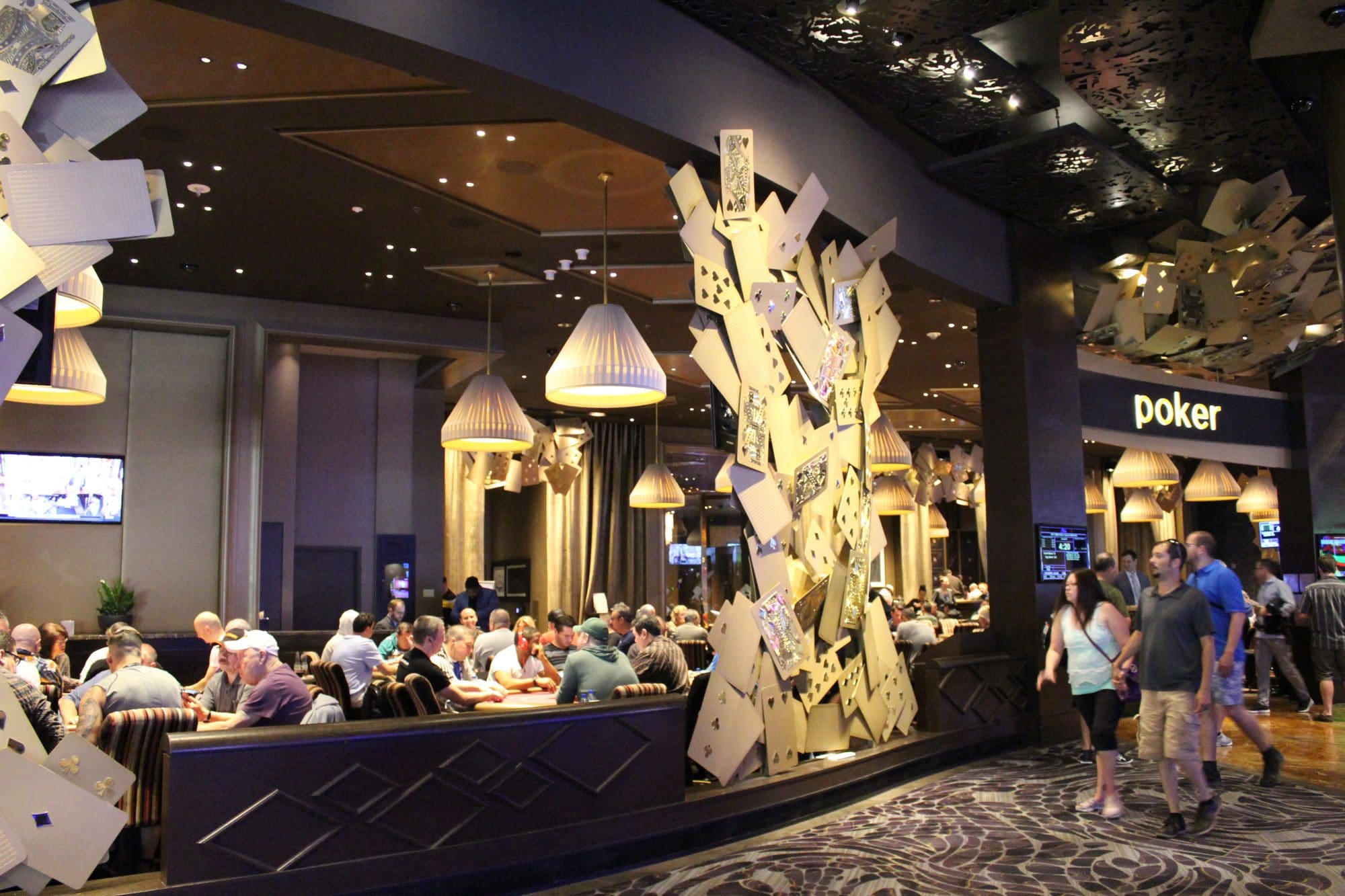In the previous article in this series I discussed some general principles for early tournament play. Using a characteristic Vegas structure, we left off just as the antes were about to kick in at 100/200/25.
If you play a “tight early” strategy as I suggest, you’ll typically find yourself at this point with around an average stack. With about 10% of the field somehow managing to bust out by this stage, this corresponds to a little more than the 15k starting stack, so you’ll still be relatively deep at around 80bb.
The antes in themselves give you considerable motivation to open up a bit as they constitute around (or exactly for big-blind ante structures) an additional big blind in every preflop pot. This is reinforced by the fact that this particular tournament, as well as many similar ones, skips the 300/600 blind level. Thus we have this level and the following 200/400 one in which we really must accumulate some chips, else when the 400/800 level kicks in we’ll be rapidly approach push-fold territory.

Something else to be aware of over these levels is that many of your opponents will be changing their preflop play in a rather puzzling way. It’s almost as if they limp into pots early in the tournament with all kinds of junk because the blinds are low, then tighten up at higher blind levels because “this hand isn’t worth 200.” Similarly, as the blinds increase, many of these players seem less inclined to defend them, despite the overlay being offered by the antes.
Increasing Your Tournament Aggression
The upshot of all this is that raising limpers, 3-betting raisers, and upping your blind stealing frequency become increasingly effective as the tournament passes through these mid levels. But as always in poker, it’s essential to pay attention for specific player tendencies. You will find plenty of players willing to crawl in with baby pocket pairs and suited aces and connectors, who will happily call a significant raise, apparently oblivious to their insufficient stack depth.
Blind stealing deserves particular attention. A significant subset of recreational tournament players are emotionally attached to their blinds. They are used to playing against other passive players, thus get a warm and fuzzy feeling when they’re in the big blind in particular, as they confidently expect to see a flop and all the excitement that apparently brings.
By raising their blinds, you first disappoint them and then annoy them. And the positional nature of poker guarantees that if you’re adopting an aggressive blind-stealing approach, you will tend to keep raising the same opponents’ blinds. The good news is that you will rarely find counter-measures taken in the form of a 3-bet. But once you see one of your victims roll their eyes or mutter under their breath (or occasionally say loudly and huffily “that’s three times”), expect their calling ranges to widen and your steals to be less effective. Of course, this situation might actually be to your benefit, since you’ll play the hand in position with a decent holding against a range which is rapidly filling up with garbage. That said, if one of these characters launches a huge post-flop bet at you and the nuts is 74, be aware the chances they have some improbable holding are higher than usual.
Note that one factor that mitigates your opponents’ suspicion that you’re opening and 3-betting light is the image you set up during the three pre-ante levels. On many occasions I’ve made a light 3-bet in the mid levels and had the original raiser flash me a strong hand as she folds it, along with some comment about it being the first hand she’s seen me play.
Bet And Raise Sizes
Since this series is primarily aimed at cash game players, a few words about raise and bet sizing are in order. I mentioned in the first installment that tournament sizings are lower than a typical low-stakes live cash game, but there is also a tendency for bets and raises to get smaller still as stack depth shrinks. So while a 3bb open is reasonable in the early levels, once stacks drop below about 80bb you can reduce that to 2.5x. You will see other players making much bigger opens, frequently following some personal algorithm based on hand strength, but unless you have some specific reason for making large opens, 2.5x is a sensible default. Similarly, whereas you might 3-bet pre 3.5x in position and 4.5x out of position in a cash game, you can reduce that considerably as stacks get shallower. This is somewhat opponent dependent; some players having open-raised aren’t going to be dissuaded from continuing by a small 3-bet, whereas others who are opening fairly liberally may decide playing out of position simply isn’t worth the hassle, particularly if they’re towards the bottom of their range.
As the money bubble gets closer, you have a real opportunity to build your stack. This is one area where I’ve noticed some differences between Vegas locals and tourists. Let me illustrate it with an incident I witnessed that still boggles my mind. I was playing cash in a room with a fast-structured tournament that is avoided by juice-averse locals. A hubbub was emanating from the final table of one such tournament. I eventually realized that the entire table had agreed to a chop. This wouldn’t be particularly remarkable were it not for the fact there had only been around twenty-five entrants. Consequently, each of the beaming “winners” profited by about thirty bucks thanks to the crippling juice.
Now you can argue that making ten bucks an hour while having fun is a win-win situation, but I think the real reason is that people come to Vegas to generate stories. All of these final tabelists could now go home and tell their friends they cashed in a poker tournament! Yeah, like the ones on TV.
Locals are also keen to cash, but I’ve never seen them take the idea to this level. That said, in the slower-structured tournament that we’re discussing, the bubble begins to loom four or five hours in, and many of the contestants clearly adopt the mindset that, having made it this far, they’re not going to bust out now.
Stealing Blinds On The Tournament Bubble
This is, of course, an invitation to open up and increase the aggression. Indeed, one reason I am reluctant to fight for pots in the early levels where the best case scenario is picking up a couple of thousand in chips, is that you can make twice that in an orbit close to the bubble with hardly any risk at all through blind stealing and light 3-betting.
Once again, you do need to play close attention to your opponents. One syndrome that can derail this approach is that some recreational players clearly find the stress of approaching the money considerable. You will occasionally see bizarre light calls of shoves, apparently because the player just wants the whole experience over. However, for the most part, expect players to nit up. You will also witness baffling plays like limp-folding off an 8bb stack. Remarkably I’ve seen this sort of lack of understanding of fundamental poker mathematics in tournaments with buy-ins up to $400.
While the near-bubble is definitely the place to build a stack, it’s important to recognize that we too are bound by the realities of ICM. It’s far preferable to be the aggressor in these spots. The closer one gets to the bubble, the bigger the mistake it is to call off your stack, even when you have good reasons to believe you are ahead of the shover’s range. We always want to be the ones getting in the final bet, whether that be a 3-bet shove preflop, or action on later streets.
It will sometimes be the case that you’re short-stacked before the bubble bursts. However, I feel a full discussion of short-stack play fits better in the next installment of this series, when I look at play ITM and through the final table.
To read the next installment in this series, please click here.

